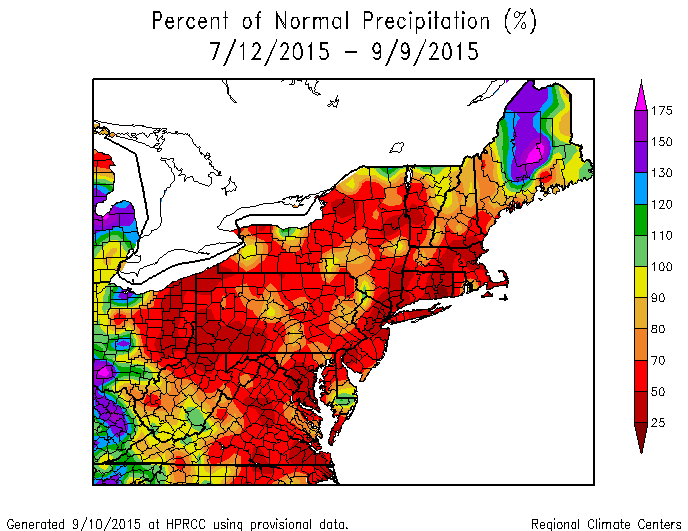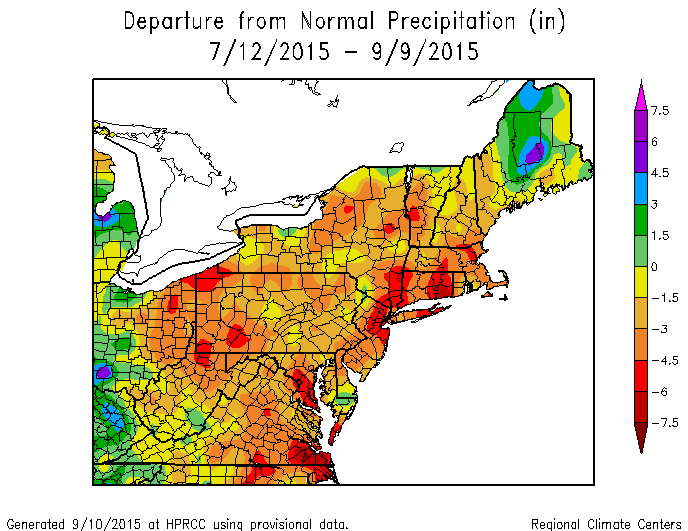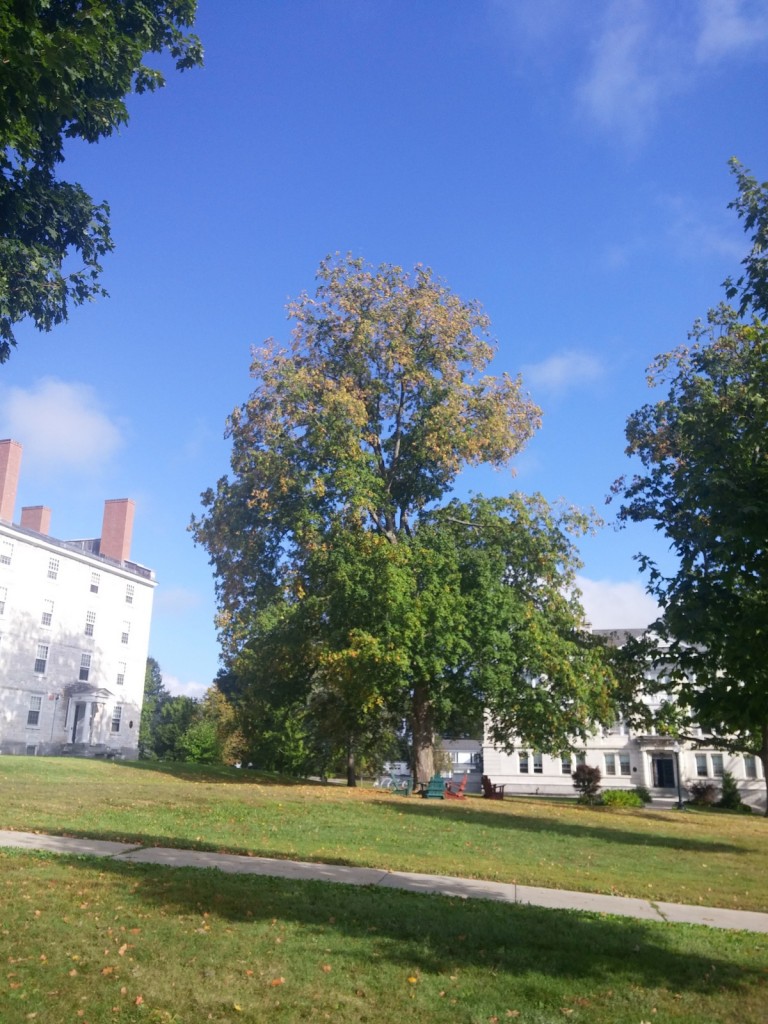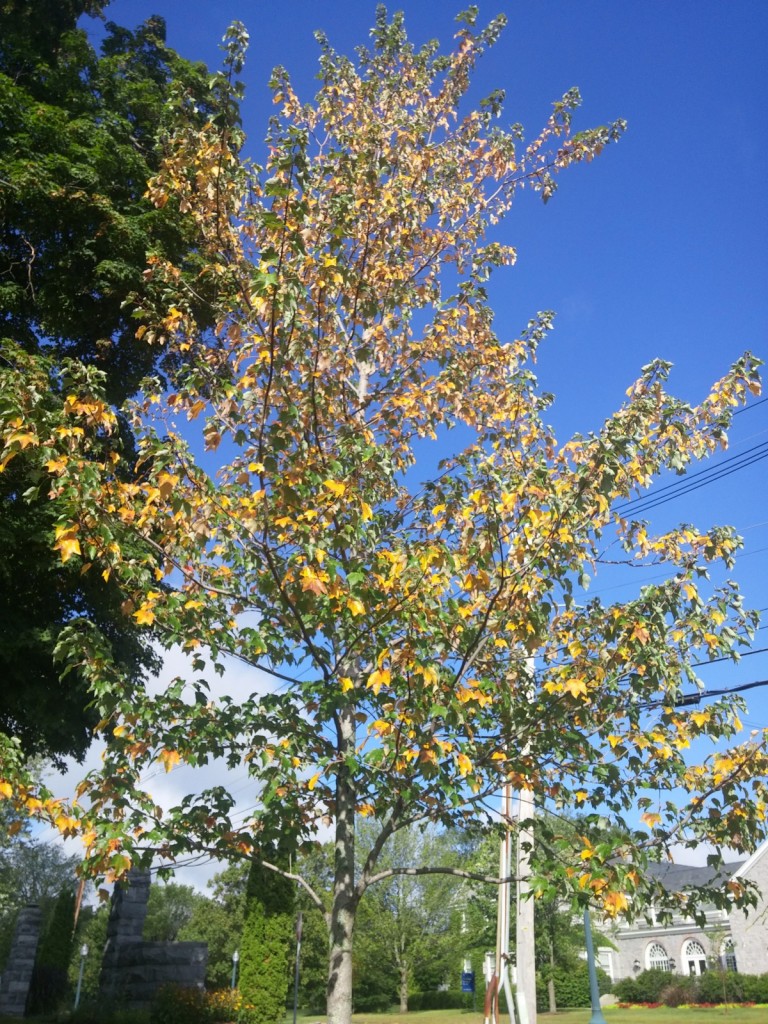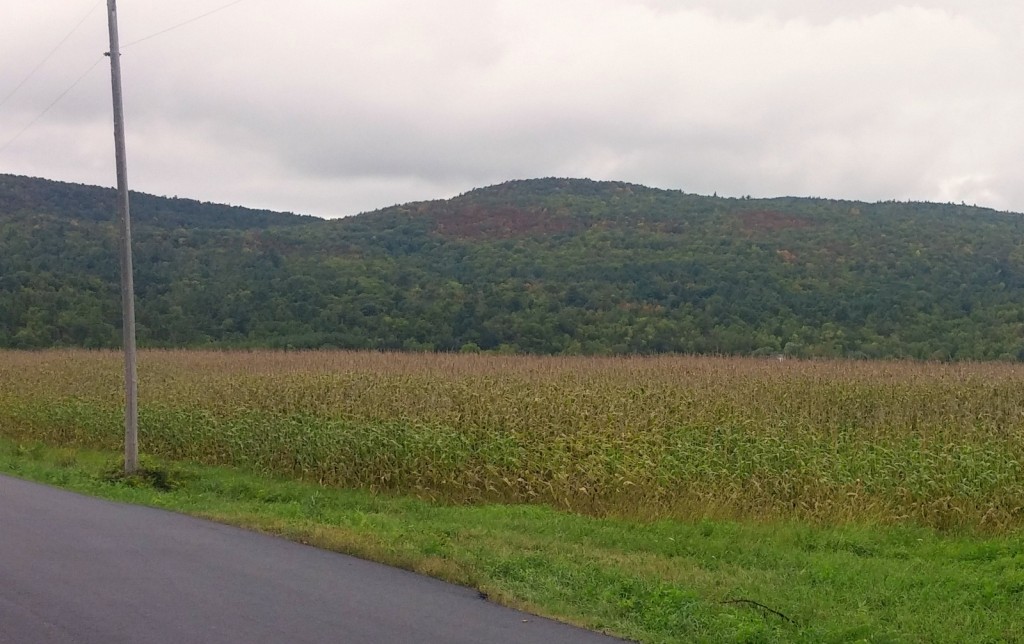Funny, considering how wet it was in late spring, when it was almost too wet to do anything outside. The High Plains Regional Climate Center (kick ass website for weather geeks!) maps show we have 25% of the normal precipitation in the last two months, that’s a 6″ deficit of rainfall.
A general rule of thumb I can’t find a reference for but I always tell anyone is that Vermont plants need a 1/2″ of rainfall per week for optimum growth. We’ve had only about 1″ in all of August, and only 1″ in July. Most of that falling in one day, leaving our clay soils to dry out and become nearly resistant to small rainfalls.
The early leaves you see falling are signs of that. Trees in temperature zones such as ours develop wide, spreading root systems, not going too deep in search of water or nutrients. In fact, much of our campus is on ledge, with very little topsoil available, meaning plants need to go shallow and wide to root into the ground.
(My unsubstantiated theory is that Middlebury was founded where it is because of the ledge-poor soils make poor farmland, and why waste valuable agricultural soils and farmland on something as unimportant as a college? Farmland in 1825 was precious, hard earned space, so let the geeks have the hill, we’ve got crops to harvest)
These wide spreading root systems enable fast, efficient uptake of water and nutrients in poor soils and a short growing season. In ordinary years, this is ideal, but in dry years, this strategy can be costly. As you can imagine, the shallow soils dry quickly, and the plants don’t have the deep extensive root systems to find moisture in the lower soil profiles. Trees are gamblers, and they’ve got a losing hand this year.
Flowers and other perennials show stress by wilting-the curling of the leaves cut down on the loss of water through the stomata (transpiration, if you want to flash back to high school biology). Trees react like that too, but also have the ability to shed leaves. We are seeing this now, and it may cause an early fall. The inner leaves on trees turn color and fall away, a survival mechanism. Inner leaves in the crown are not as efficient, they don’t photosynthesize as well, and therefore are not as “useful” to the tree as the outer, younger leaves. In desperation, the tree will shed the inefficient leaves ,brutally choosing the younger leaves to use the precious remaining water they have remaining.
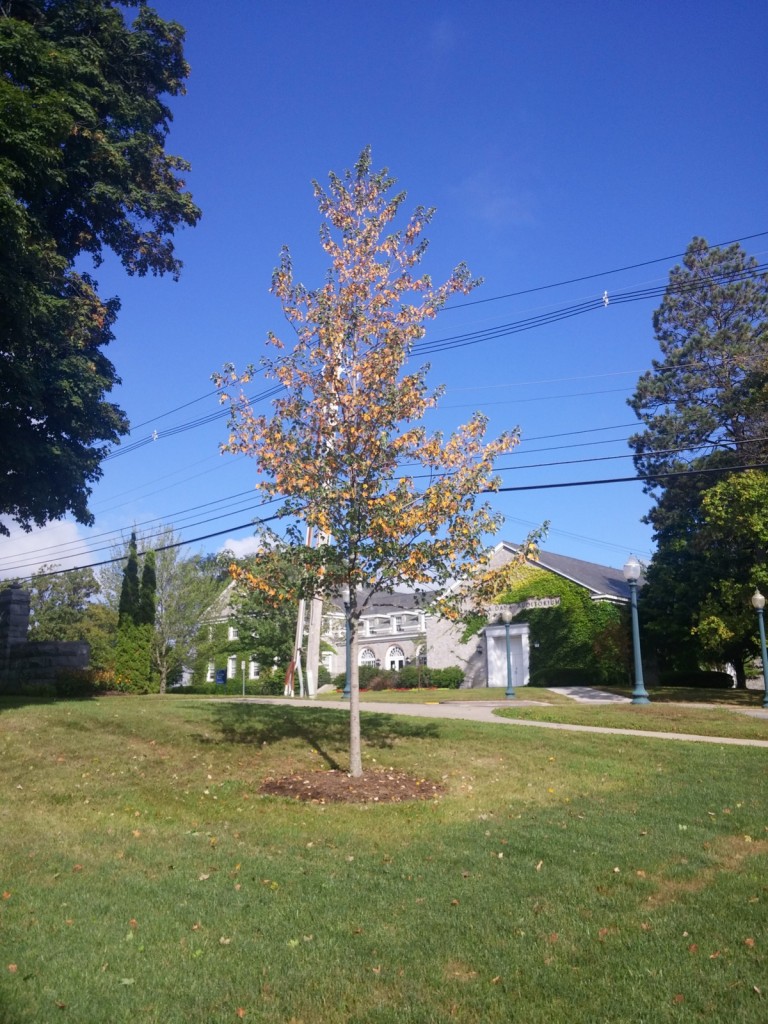
Younger Red maple showing classic drought stress-note interior leaves browning with ends of branches still green
We’ve had a little bit of rain this weekend, and more is coming, so luck it will come in time to prevent a wholesale dropping of leaves before your parents come up for fall family weekend. Snake Mountain above my house is starting to turn brown along the ledges, though, though, so lower expectations while you can.
